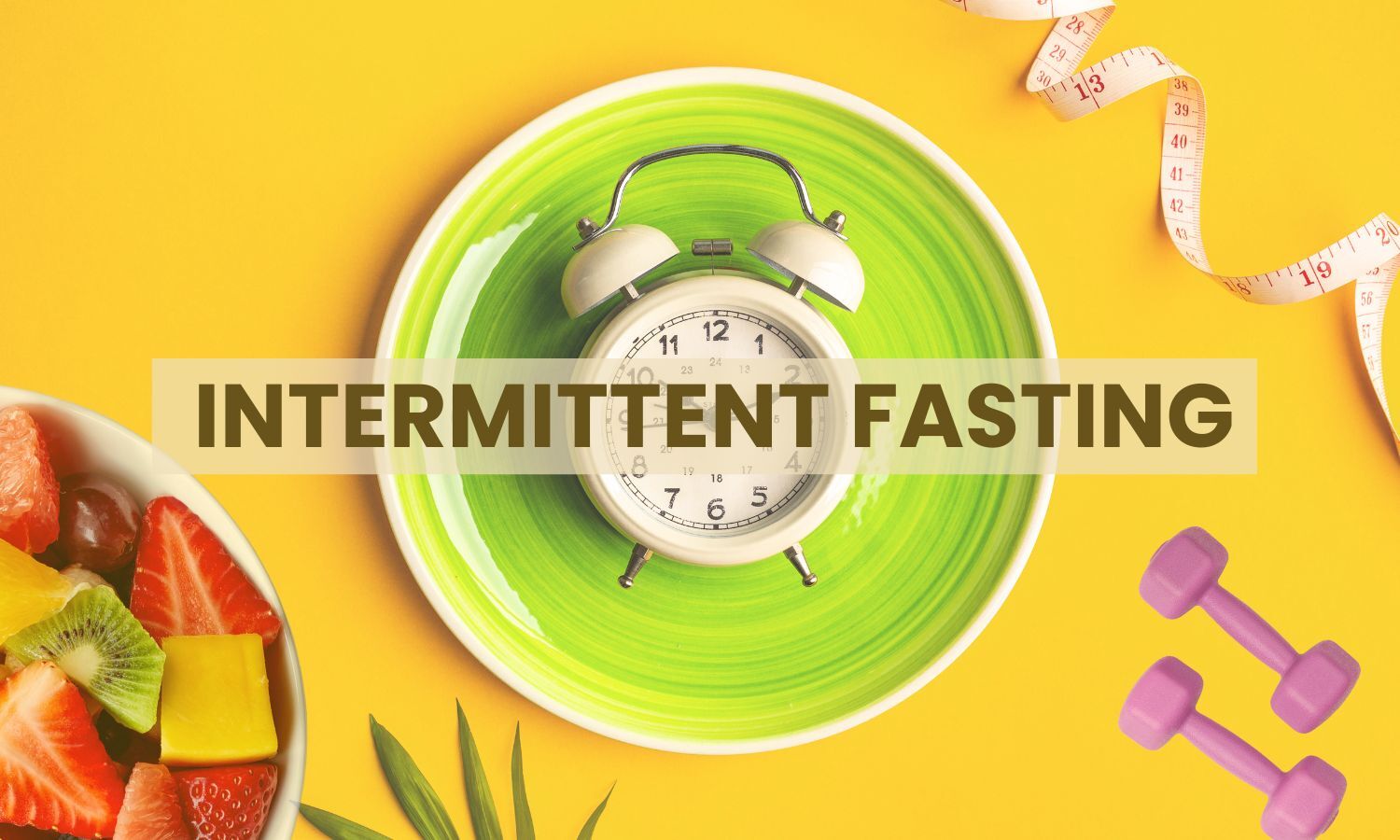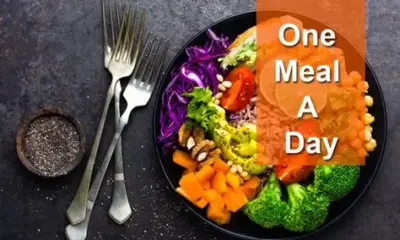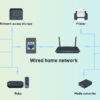How-To
How to Practice Intermating Fasting
Learn how to start intermittent fasting, including popular methods like 16/8 and 5:2, what to eat, and common benefits and challenges.
Intermittent fasting (IF) is not a diet in the traditional sense; rather, it’s an eating pattern that cycles between periods of eating and voluntary fasting. It doesn’t dictate what you eat, but when you eat. This ancient practice, often seen in various cultures and religions throughout history, has gained significant popularity in recent years due to its potential benefits for weight management, metabolic health, and overall well-being.
The concept behind intermittent fasting is rooted in human evolution. Our ancestors did not have constant access to food and often went for extended periods without eating. Our bodies are well-equipped to handle periods of fasting, and doing so can trigger beneficial cellular and hormonal adaptations. For example, during a fasted state, the body depletes its glycogen stores and begins to burn stored fat for energy, a process known as ketosis. Fasting also initiates autophagy, a cellular “self-cleaning” process where cells remove damaged components, which is thought to contribute to longevity.
While the scientific community is still actively researching the long-term effects, many studies have shown promising results regarding weight loss, improved insulin sensitivity, reduced inflammation, and enhanced brain function. This guide will provide a practical “how-to” on various intermittent fasting methods, helping you understand how to incorporate this eating pattern into your lifestyle.
Before You Start: Important Considerations
Consult Your Doctor: Before embarking on any new eating pattern, especially one involving fasting, it is crucial to consult your healthcare provider. This is particularly important if you have:
- Diabetes or blood sugar regulation issues
- A history of eating disorders
- Are pregnant, breastfeeding, or trying to conceive
- Are underweight
- Take medications that need to be taken with food
- Have underlying health conditions.
Start Gradually: Intermittent fasting is a lifestyle change, not a quick fix. Begin slowly and allow your body to adapt.
Focus on Nutrient-Dense Foods: During your eating windows, prioritize whole, unprocessed, nutrient-dense foods. This includes lean proteins, healthy fats, complex carbohydrates, and plenty of fruits and vegetables. Intermittent fasting is not an excuse to eat unhealthy foods during your eating window.
Stay Hydrated: This is paramount. Drink plenty of water throughout the day, especially during fasting periods.
Popular Intermittent Fasting Methods
There are several approaches to intermittent fasting. The best method for you depends on your lifestyle, preferences, and goals.
Method 1: The 16/8 Method (Leangains Protocol)
This is the most popular and easiest method for beginners. It involves fasting for 16 hours each day and restricting your eating window to 8 hours. Most people find this manageable by simply skipping breakfast.
How to Practice:
- Choose your 8-hour eating window: Common windows include 12 PM to 8 PM, 1 PM to 9 PM, or 10 AM to 6 PM.
- Example (12 PM – 8 PM eating window):
- Fast: 8 PM (Day 1) to 12 PM (Day 2).
- Eat: 12 PM to 8 PM (Day 2).
- Example (12 PM – 8 PM eating window):
- Skip breakfast: For many, this means eating dinner by 8 PM, then not consuming calories until lunch the next day at 12 PM.
- Hydrate during fasting: During the 16-hour fasting period, you can consume water, black coffee, plain tea, or unsweetened sparkling water. These beverages contain negligible calories and will not break your fast.
- Eat balanced meals: During your 8-hour eating window, consume 2-3 healthy, balanced meals. Don’t overcompensate for the fasting period by overeating or consuming unhealthy foods. Focus on satiety and nutrition.
Benefits: Easy to incorporate into daily life, less restrictive than other methods, effective for weight loss and blood sugar management.
Method 2: The 5:2 Method (The Fast Diet)
This method involves eating normally for five days of the week and restricting calorie intake to 500-600 calories on two non-consecutive days.
How to Practice:
- Choose your normal eating days: For example, Monday, Tuesday, Thursday, Saturday, Sunday.
- Choose your “fasting” days: Select two non-consecutive days (e.g., Wednesday and Friday).
- Calorie restriction on fasting days: On your two chosen “fasting” days, limit your calorie intake to:
- 500 calories for women.
- 600 calories for men.
- Distribute these calories into one or two small, light meals. For example, a 250-300 calorie breakfast and a 250-300 calorie dinner.
- Hydrate on fasting days: Drink plenty of water, black coffee, and tea on these restricted calorie days.
- Eat normally on non-fasting days: On your five “normal” eating days, continue to eat a healthy, balanced diet without overindulging.
Benefits: Flexibility, can be easier to stick to for some compared to daily fasting, good for weight management.
Method 3: Eat-Stop-Eat (24-Hour Fast)
This method involves a full 24-hour fast, once or twice a week.
How to Practice:
- Choose your fasting day(s): For example, you might fast from dinner on Monday until dinner on Tuesday.
- Complete a 24-hour fast: If you finish dinner at 7 PM on Monday, you would not eat again until 7 PM on Tuesday.
- Hydrate during fasting: Only consume zero-calorie beverages (water, black coffee, plain tea) during the 24-hour fast.
- Resume normal eating: After the 24-hour fast, resume your regular healthy eating pattern. Do not overeat to compensate.
Benefits: Can be effective for weight loss, promotes metabolic flexibility.Challenges: Can be more difficult due to the longer fasting period.
Method 4: Alternate-Day Fasting (ADF)
This method involves fasting every other day, either with a complete fast or a modified fast (e.g., 500 calories on fasting days).
How to Practice:
- Fast every other day:
- Full ADF: No calories on fasting days.
- Modified ADF: Consume 500-600 calories on fasting days.
- Eat normally on non-fasting days: On your “eating” days, consume a healthy diet.
- Hydrate: Stay well-hydrated on all days.
Benefits: Can lead to significant weight loss.Challenges: More intense and can be difficult to sustain long-term for some individuals.
What You Can Consume During the Fasting Window
To maintain a true fasted state, you should avoid anything that significantly raises your blood sugar or insulin levels.
- Water: Plain water, sparkling water.
- Black Coffee: Without milk, sugar, or artificial sweeteners.
- Plain Tea: Green tea, black tea, herbal tea (without added sweeteners).
- Apple Cider Vinegar (ACV): A small amount diluted in water.
- Electrolytes: Unsweetened electrolyte supplements (especially for longer fasts) to prevent dehydration and mineral imbalances.
- Small amounts of fat (for some protocols): Some variations, particularly those focusing on ketosis, allow a small amount of healthy fats (e.g., a teaspoon of MCT oil in coffee), but this can be debatable for “pure” fasting benefits. For beginners, stick to zero-calorie options.
Avoid: Anything with calories, including fruit juice, milk, sugary drinks, diet sodas (artificial sweeteners can sometimes trigger an insulin response in some individuals), and any food.
Common Challenges and How to Overcome Them
- Hunger: This is the most common challenge, especially at the beginning. It usually subsides after a few days as your body adapts. Drink water, black coffee, or tea. Distract yourself.
- Fatigue/Low Energy: Especially during the initial adjustment period. Ensure you’re consuming enough calories and nutrients during your eating window. Stay hydrated.
- Headaches: Often related to dehydration or caffeine withdrawal. Drink water and consider a small amount of salt.
- Irritability: “Hangry” is real. Be aware of it and manage your expectations for yourself and others.
- Electrolyte Imbalance: Can occur with longer fasts. Consider unsweetened electrolyte supplements.
Expected Benefits (Potential)
Many individuals report the following benefits from consistent intermittent fasting:
- Weight Loss: By creating a natural calorie deficit.
- Improved Metabolic Health: Increased insulin sensitivity, lower blood sugar.
- Increased Energy Levels: Once adapted, many feel more energetic and focused.
- Enhanced Brain Function: Some report improved clarity and focus.
- Reduced Inflammation: Potential anti-inflammatory effects.
- Cellular Repair (Autophagy): Promotion of cellular “self-cleaning.”
Important Considerations for Long-Term Practice
- Listen to Your Body: If you feel unwell, dizzy, or experience severe discomfort, break your fast. This is not about suffering.
- Nutrient Timing: Ensure you’re getting all essential nutrients during your eating window. Consider supplementing if your diet is lacking.
- Consistency: Like any lifestyle change, consistency is key to seeing results.
- Exercise: You can typically continue exercising while practicing IF. Some prefer to work out in a fasted state, others prefer to eat beforehand. Experiment to see what works for you.
- Social Situations: Be prepared for social situations involving food. IF requires planning and sometimes explaining your choices to others.
FAQ Section
Q1: Will intermittent fasting make me lose muscle mass?
Research suggests that intermittent fasting, when combined with adequate protein intake and resistance training during eating windows, is unlikely to lead to significant muscle loss. In fact, some studies show it can help preserve muscle while promoting fat loss.
Q2: What can I drink during my fasting window?
During your fasting window, you can drink water, black coffee, plain tea (green, black, herbal, unsweetened), and unsweetened sparkling water. These beverages contain negligible calories and will not break your fast. Avoid anything with sugar, milk, cream, or artificial sweeteners.
Q3: Can I chew gum while intermittent fasting?
Most experts advise against chewing gum, especially sugary gum, during your fasting window. Even sugar-free gum with artificial sweeteners could potentially trigger an insulin response in some sensitive individuals, thereby technically breaking the fast. It’s best to stick to water or other zero-calorie, unsweetened beverages.
Q4: Is intermittent fasting suitable for everyone?
No, intermittent fasting is not suitable for everyone. It is strongly advised to consult your doctor before starting, especially if you are pregnant, breastfeeding, underweight, have diabetes, a history of eating disorders, or are on certain medications. Children and adolescents should also not practice intermittent fasting without medical supervision.
Q5: How long does it take to see results from intermittent fasting?
The time it takes to see results from intermittent fasting varies depending on individual factors like metabolism, starting weight, adherence to the eating pattern, and the quality of food consumed during eating windows. Some people notice changes in energy levels and slight weight loss within a few weeks, while significant weight loss and metabolic improvements may take several months of consistent practice.



















